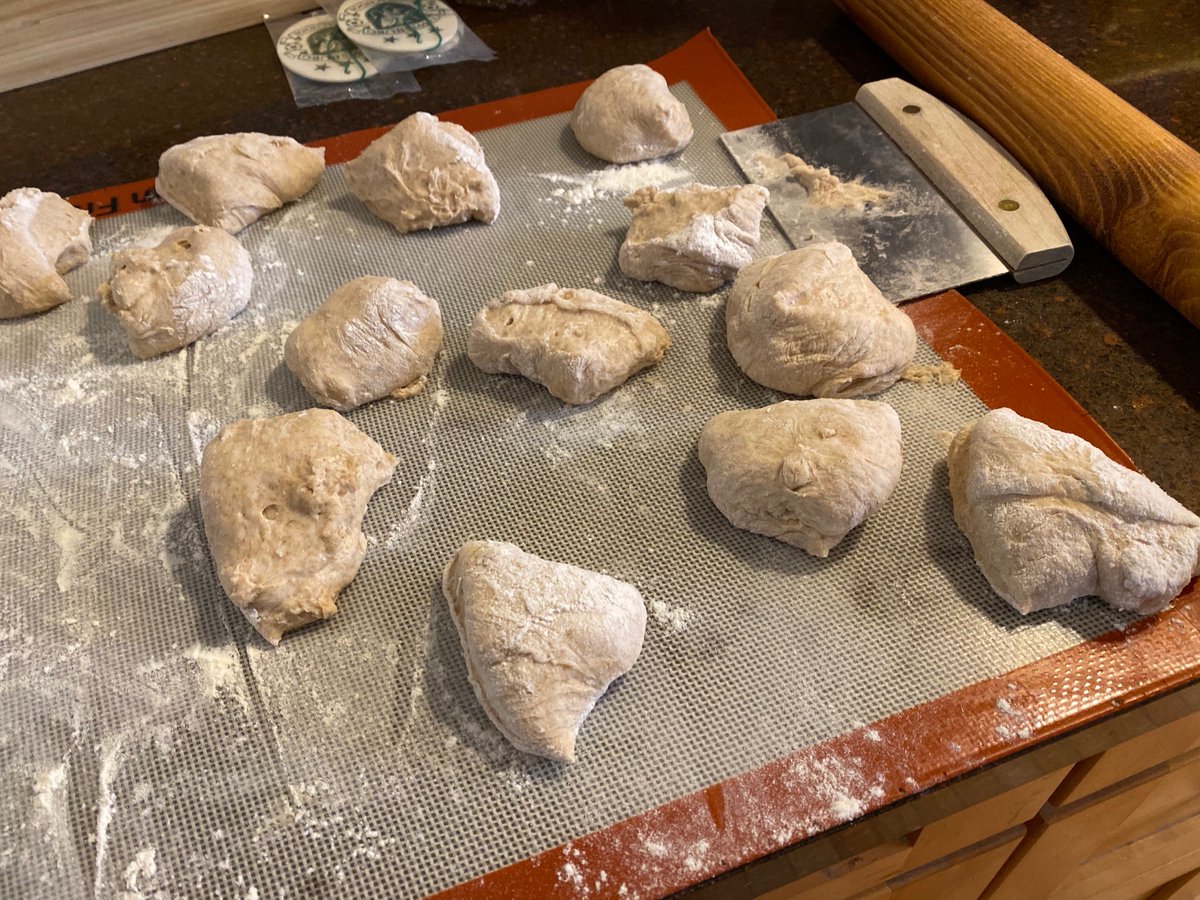
Time for some #FoodSci tweets! There’s a new analytical device in the lab - a super cute water activity meter. Let’s take it for a spin and talk about my very favorite food science & thermodynamics topic: Water Activity (aw)! #FoodSci 1/21 

Water activity is molecular-basis effective concentration of water in a food (or in anything). “Molecular basis” means it’s not grams / liter or teaspoons/gallon, but it’s on the basis of number of molecules present (moles of water / total moles aka mole fraction). #FoodSci 2/21
“Effective” means it’s corrected to account for the ways certain molecules punch above their weight as it were, by interacting more or less than you’d expect based on their actual concentration. #FoodSci 3/21
We care about water activity in foods because it is an important predictor of shelf-stability. Foods with high water activity are particularly susceptible to molds and/or bacterial growth, #FoodSci 4/21
and we generally have to eat them quickly and keep them refrigerated or frozen. Pretty much any fresh fruit or vegetable or meat or fish has a high aw. #FoodSci 5/21
Foods with aw of 0.85 or below have a much better chance of being shelf-stable. In fact, one of the reasons salt & sugar are added to “processed” foods is so they will meet this metric and keep better. #FoodSci 6/21
Ex: a fresh strawberry has a aw of about 0.97, but strawberry jam has an aw around 0.85. See video here for the full details #FoodSci 7/21 :
We can estimate water activity for a food by looking at the masses of sugar/fat/etc on the nutrition label, calculating the number of moles of each component, then computing the mole fraction of water. #FoodSci 8/21
Or we can measure water activity with the appropriately named Water Activity Meter. It measures aw by measuring relative humidity of the air that’s in equilibrium with a given sample of food. It turns out, water activity is = relative humidity exactly! #FoodSci 9/21 

I happen to have a convenient chocolate creme sandwich cookie. Shall we test this all out? #FoodSci 10/21 

This cookie is crunchy, which is a hint that aw is going to be relatively low, probably 0.5 or less. It also happily keeps at room temperature without going fuzzy, another hint that aw is on the low side #FoodSci 11/21 

Using the nutrition label and some typical molecular weights, I’ve worked out the number of moles (a measure of the number of molecules) of each component. #FoodSci 12/21 

Working through the math, I calculate that I expect the aw to be about 0.20! That’s DRY #FoodSci 13/21 

And what does the aw meter say? Well, I made a measurement of the cookie and the filling separately. The cookie comes out at 0.24…… #FoodSci 14/21 



And within error, the value for the filling is just about exactly the same, aw=0.25 #FoodSci 15/21 



So wait - the crunchy cookie has the SAME water content as the creamy filling? Why do that? How is that even possible? #FoodSci 16/21
First, why: Any chemical will tend to migrate over time from regions of high activity to regions of low activity. At equilibrium, all components in contact will have the same activity. #FoodSci 17/21
SO If the cookie and the filling had different aw to start, as the cookie sat on the shelf, the water would migrate. If the creamy filling had a higher aw, over time some of that water would migrate to the cookie, and the cookie wouldn’t be as crisp anymore. #FoodSci 18/21
2nd, How: While actual whipped cream has a very high aw (it’s mostly water), “creme” fillings are almost entirely of fats & sugars. Very little water, in order to keep the cookie crisp. The filling is literally designed to have exactly the same aw as the cookie. #FoodSci 19/21 

(PS - this is almost certainly what’s behind that creme-filled cake having its legendary shelf-life - its components all have lower-than-you’d expect aw) #FoodSci 20/21
So there you go-we can get an estimate within ~20% of the expt value using only info from the nutrition label, avg mw, & a quasi-ideal solution assumption. & your favorite sandwich cookie should be fine without refrigeration, even though it’s got a creamy filling! #FoodSci 21/21
PS - Thank you very much to the Garman Fund at @BU_ENGR for purchasing the Water Activity Meter that makes this kind of exploration possible! Today’s activity was testing the machine for the first time. #FoodSci 

@threadreaderapp unroll pretty please
• • •
Missing some Tweet in this thread? You can try to
force a refresh







